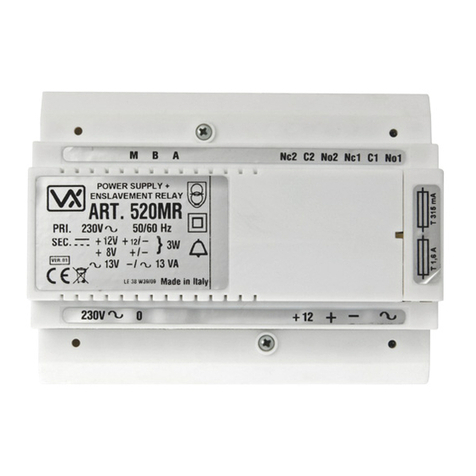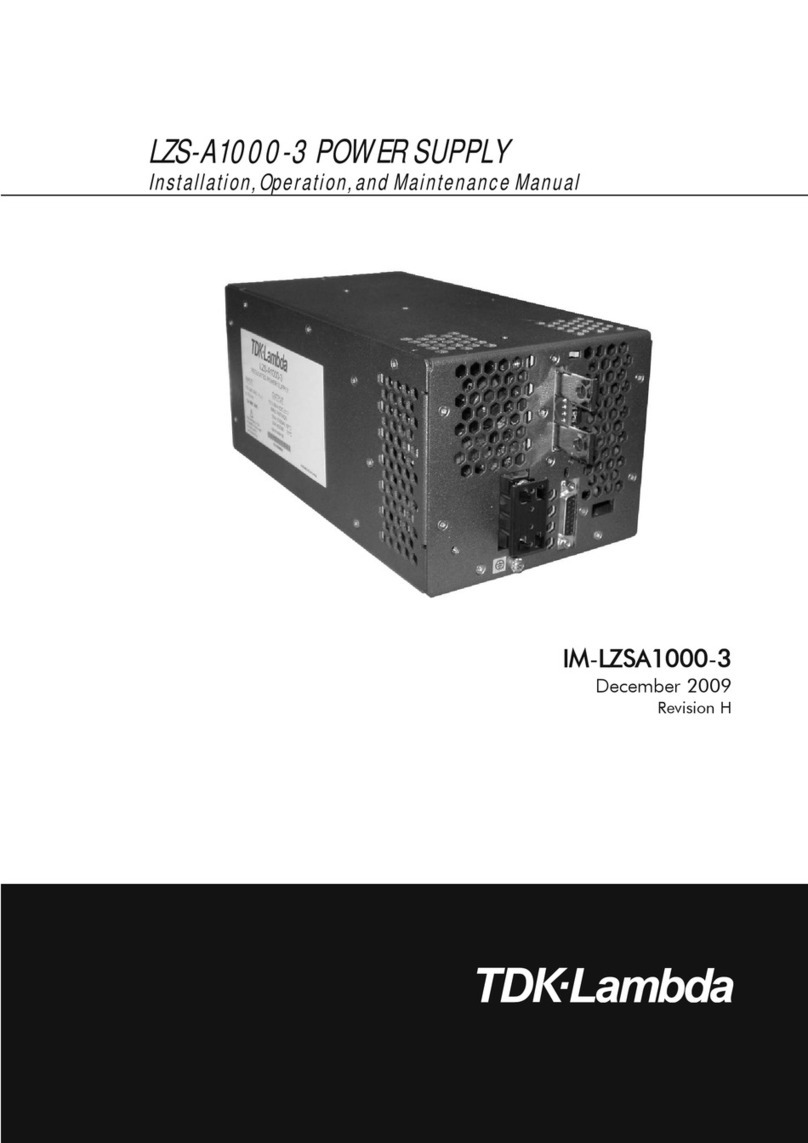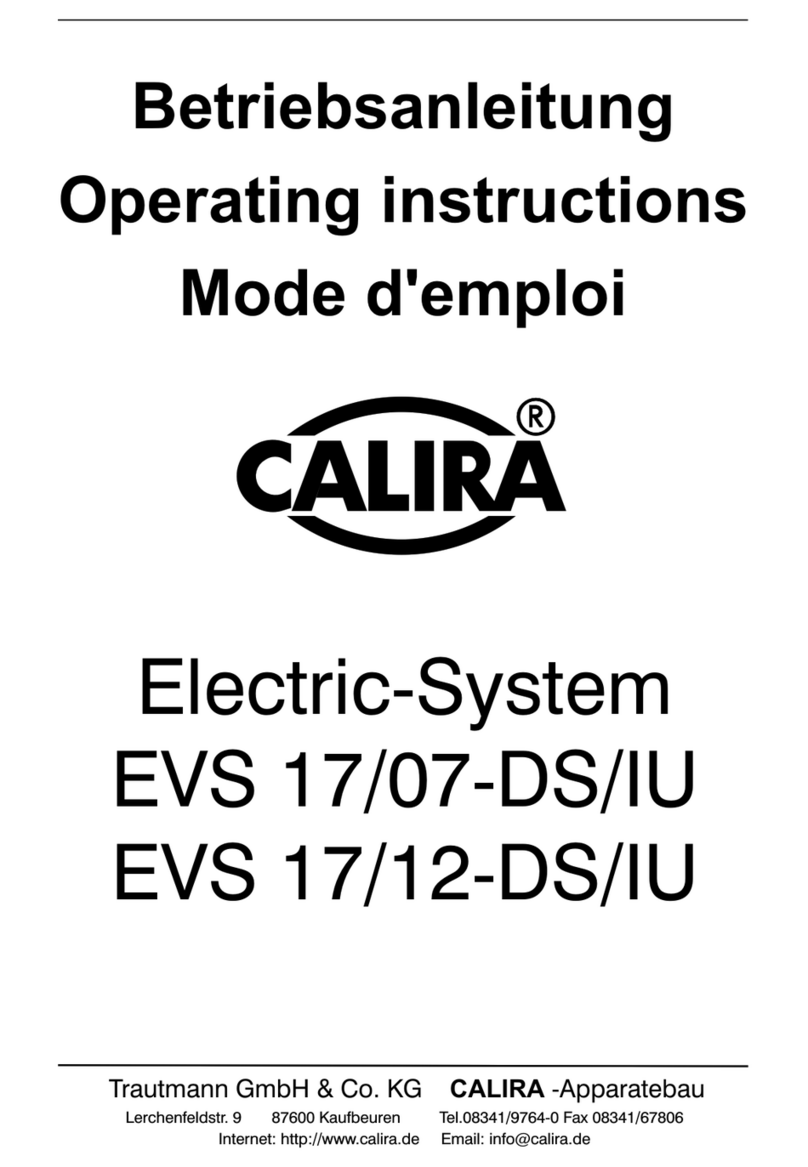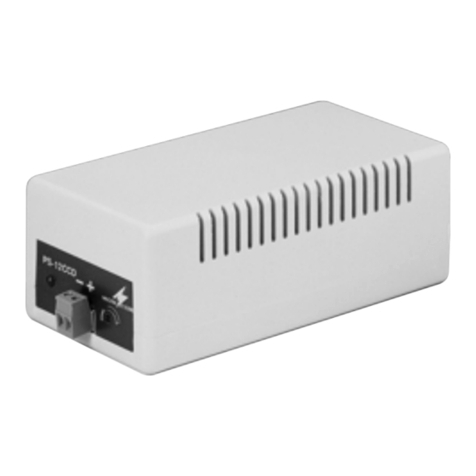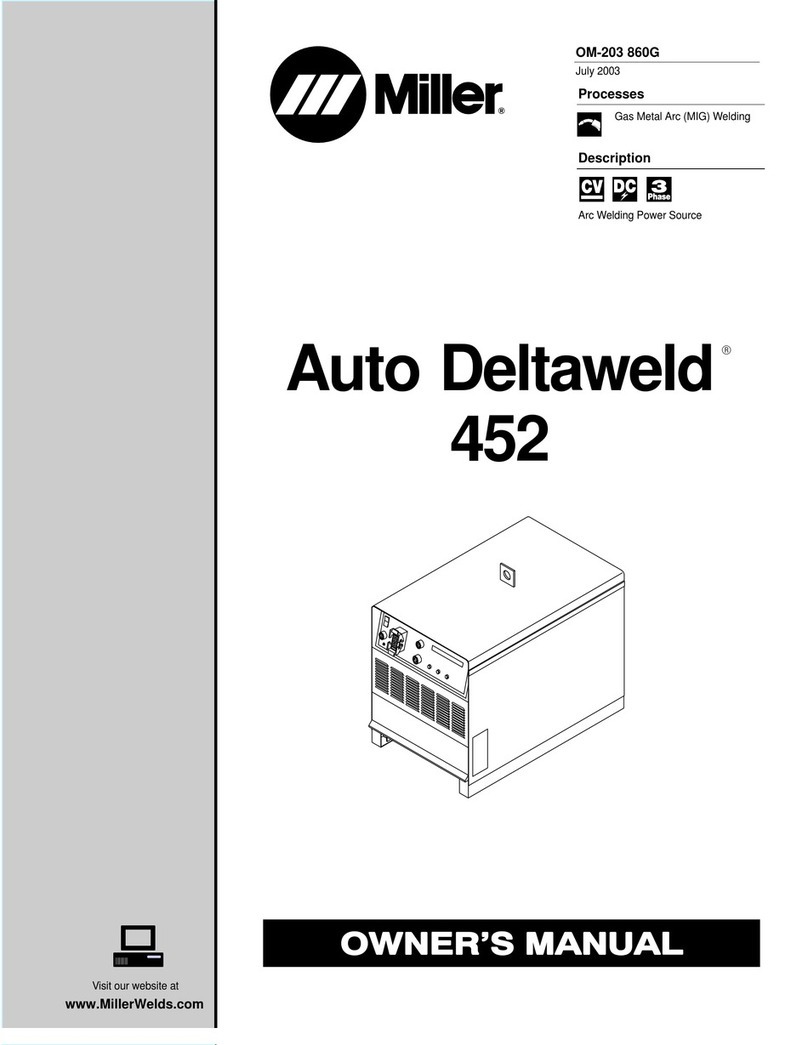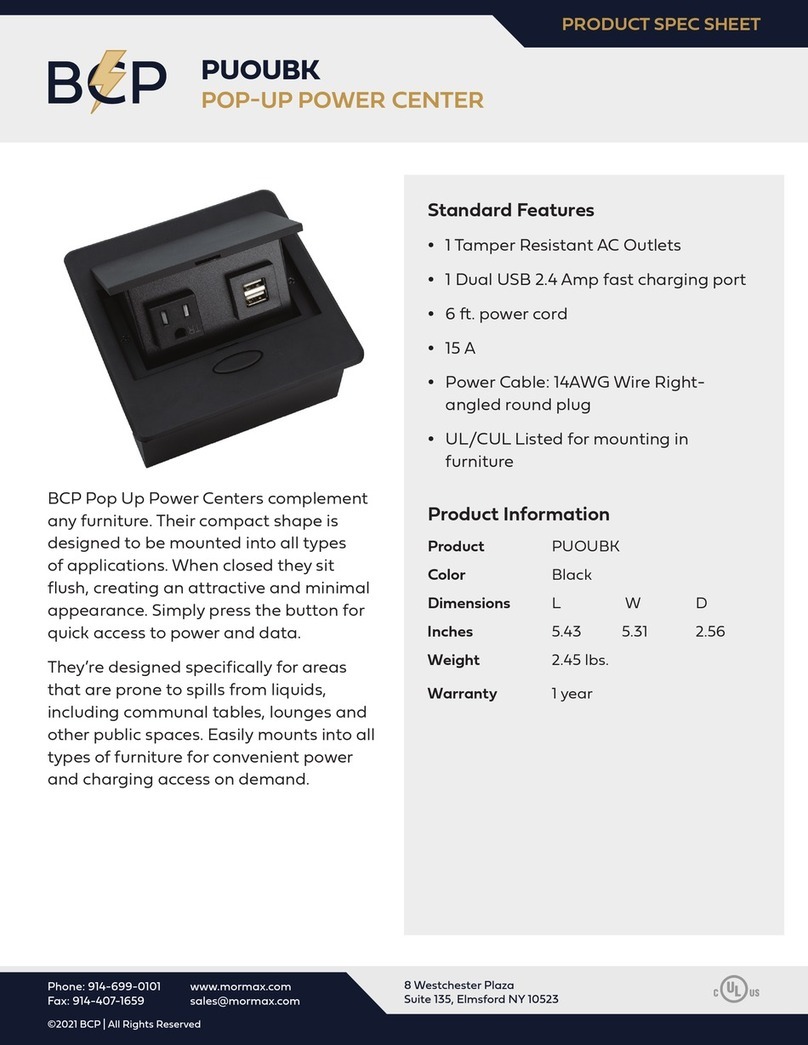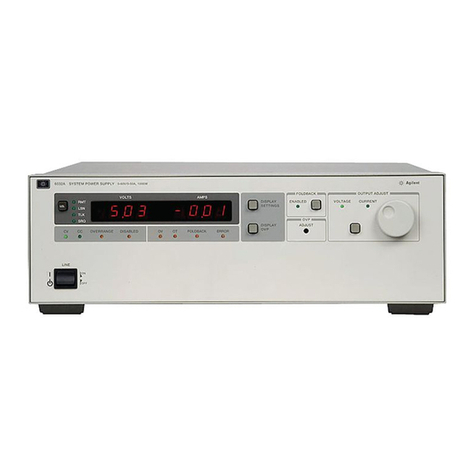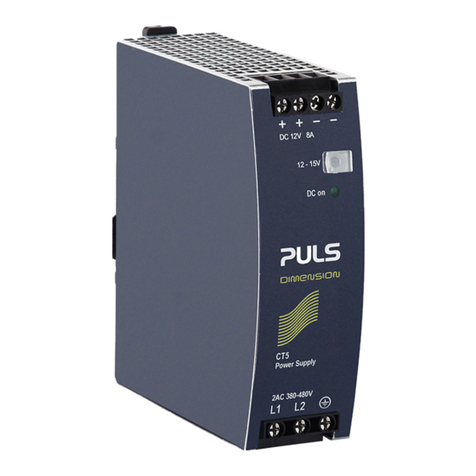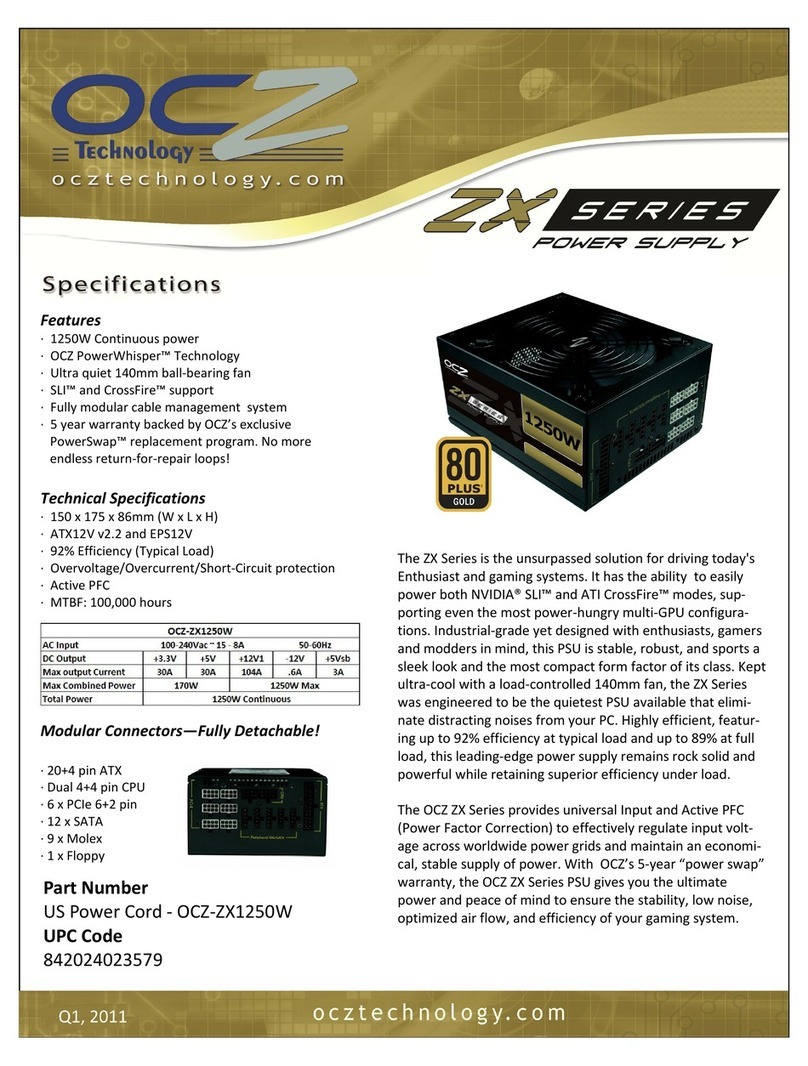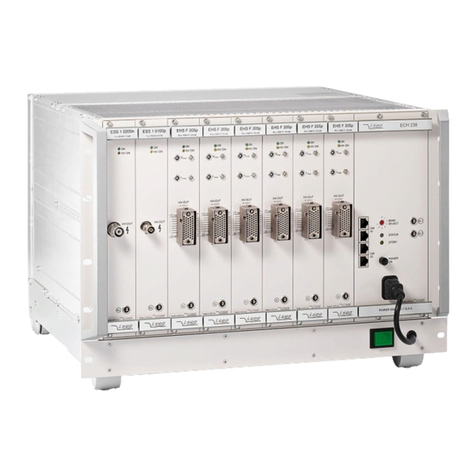
Polígono Industrial Júndiz - C/ Ibarredi, 4- Apdo. 1578 - E-01015 VITORIA (España)
TEL: + 34 902 208 108 - FAX: +34 945 290229 - www.daisalux.com
Stromversorgungseinheit für ZENTRAL VERSORGTE 24VDC-Notleuchten
PBS-20 / PBS-60
FUNKTIONSWEISE
Das Gerät verfügt über zwei grundsätzliche Betriebszustände:
ÀAKTIV (ON):
- Das Gerät wird automatisch in diesen Zustand versetzt, wenn es an das STROMNETZ
angeschlossen wird oder manuell, wenn im BLOCKIERTEN Zustand die ON-Taste
betätigt wird.
- BEI VORHANDENEM STROMNETZ: ein elektrischer Stromkreis lädt die Gerätebatterie
auf, überwacht die Stromspannung im NETZ und versorgt die an das Gerät angeschlossenen
Notleuchten mit einer Spannung von -6VDC. Es ist möglich, über ein angeschlossenes
DAISALUX Fernsteuerungsgerät (optional) oder über die Taste TEST, einen Netzausfall zu
simulieren und den Betrieb im Notzustand zu überprüfen.
- NETZAUSFALL: sinkt die Spannung in NETZ unter 70% des Nennwertes, wechselt das
Gerät in den Notzustand und versorgt die angeschlossenen Notleuchten mit 24 VDC, so lange
die Nominalleistung seiner Einzelbatterie reicht bzw. darüber hinaus. Über die Taste ON-
OFF kann das Gerät in den Ruhe-Zustand geschaltet werden. Wird ein DAISALUX
Fernsteuerungsgerät (optional) angeschlossen, kann vom Notzustand in den Ruhe-Zustand
umgeschaltet werden und umgekehrt.
ÁBLOCKIERT (OFF):
- Das Gerät wechselt automatisch in diesen Zustand, wenn es im Notleuchtenkabel einen
Kurzschlußfeststellt,odermanuell,wennimAKTIVEN ZustanddieOFF-Tastebetätigtwird.
Es bleibt in diesem Zustand, bis ON betätigt wird, falls kein Kurzschluß im Notleuchtenkabel
existiert.
- In diesem Zustand unterbricht das Gerät die Stromversorgung der LED-Lampen der
NotleuchtenundwechseltimFalleinesSpannungsausfallesimNETZnichtindenNotzustand.
Notbeleuchtungskörper und Ausrüstungen.
3.- DEN DECKEL SCHLIESSEN UND DAS GERÄT UNTER STROM
SETZEN.
.- DIE KONTROLLEUCHTEN "RED", "ON" UND "CARGA"
LEUCHTEN. LEUCHTET "OFF", EXISTIERT EIN KURZSCHLUSS
IN DER NOTLEUCHTENINSTALLATION ODER NOTLEUCHTEN
SIND FALSCH ANGESCHLOSSEN.
.- DAS PROBLEM LÖSEN UND "ON/OFF" BETÄTIGEN, UM DAS
GERÄT IN AKTIV-ZUSTAND ZU BRINGEN.
.- KONTROLLIEREN, OB AN ALLEN NOTLEUCHTEN ALLE LED-
KONTROLLAMPEN LEUCHTEN. ANDERNFALLS DEN
ANSCHLUSS DER BETREFFENDEN NOTLEUCHTE UND IM
SPEZIELLEN DIE POLARITÄT, ÜBERPRÜFEN.
.- <<VORSICHT >>: DAS GERÄT VOR DURCHFÜHRUNG DES
TESTS MINDESTENS 24 STUNDEN AUFLADEN.
.- "TEST" BETÄTIGEN UND DIE NOTBELEUCHTUNG ALLER
NOTLEUCHTEN KONTROLLIEREN. SCHALTET SICH EINE
NICHT EIN, DIE GLÜHLAMPE AUSTAUSCHEN.
INSTANDHALTUNG
-DieseGeräteverfügenfürdieStromversorgungübereineaufladbarehochtemperaturbeständige
Ni-Cd-Batterie. Die Batteriehersteller garantieren eine vierjährige Lebensdauer oder mindestens
400Lade-/Entladezyklen.NachAblaufdieserZeit,müssendieBatterienausgetauschtwerden,um
die Produkteigenschaften intakt zu halten.
- Die Nennspannung, die Eigenversorgungszeit sowie die Batterieeigenschaften, sind
unlöschbar auf dem Gerät angegeben.
- Bewahren Sie diese Anleitungen auf.
ZUBEHÖR
-NormalesFernsteuerungsgerät,zeitgesteuertesFernsteuerungsgerät,steuerbarüberComputer
oder Fernsteuerungs-Melder.
- Zentral versorgte 24VDC-Sherpa- und Aras-Notleuchten.
Die Batterieladegerät-Serie PBS wurde entwickelt, um eine entsprechene Stromversorgung für
zentral versorgte Notleuchten mit 24VDC zu garantieren.
VORSICHT:
- Dieses Produkt enthält eine umweltschädliche Ni-Cd-Batterie. Diese muß recycled oder
entsprechend entsorgt werden.
- Vor dem Anschließen des Gerätes ist zu überprüfen, ob die Versorgungsspannung des
Stromnetzes der auf dem Gerät angegebenen entspricht.
- Vor Durchführung jeglicher Instandhaltungsarbeiten muss sichergestellt werden, dass das
Gerät nicht an das STROMNETZ angeschlossen ist.
-AlleArtenvonInstandhaltungs-oderReparaturarbeitenmüssenvonqualifiziertemFachpersonal
durchgeführt werden.
- Um keinen übermäßigen Spannungsabfall in den Installationen zu produzieren, sollte die
Länge des Anschlußkabels zu den Notleuchten beim PBS-20-Modell 150 Meter nicht
überschreitenundbeimPBS-60nicht über50Meterbetragen (1,5mm2Aderquerschnitt-15%
desGesamtabfalls).WerdengrößereLängenbenötigt,solltenAdernmitgrößeremQuerschnitt
eingesetzt werden oder mehrere Kabelleitungen zu den Notleuchten gelegt werden.
VORSICHTSMASSNAHMEN
[PBS] VERSION:16-02-09
